Northern Gold Mining Inc.
Buffonta Property
The Buffonta Mine Group is located two kilometers southwest of the Garrison Gold Property in the Garrison, Thackeray and Harker Townships in north eastern Ontario. Combined with several mining claims staked by Northern Gold, the historic Buffonta claim group is comprised of a contiguous block of 90 staked mining claims and 24 patented mining claims totalling 2122 hectares.
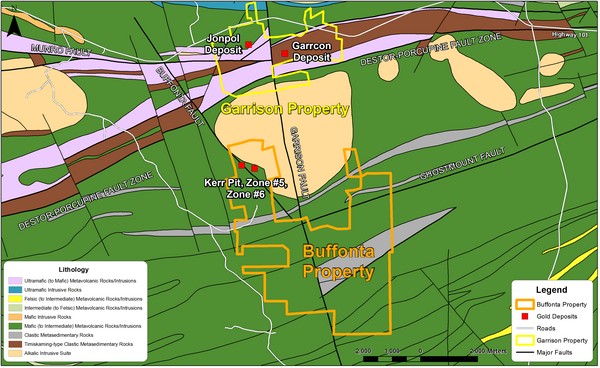
Highlights
• Past producing mine with historical gold resources*
• High grade open pit with near term development opportunities
• Significant expansion potential down dip and within undeveloped zones
Drilling
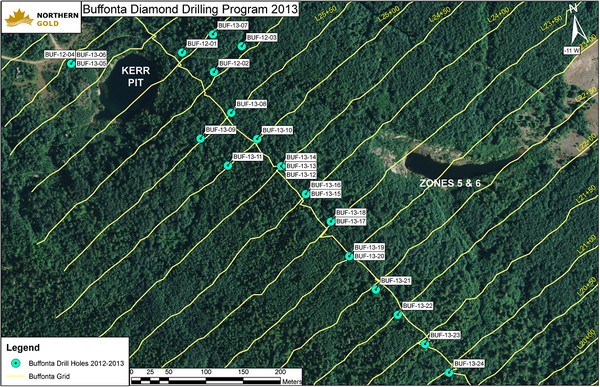
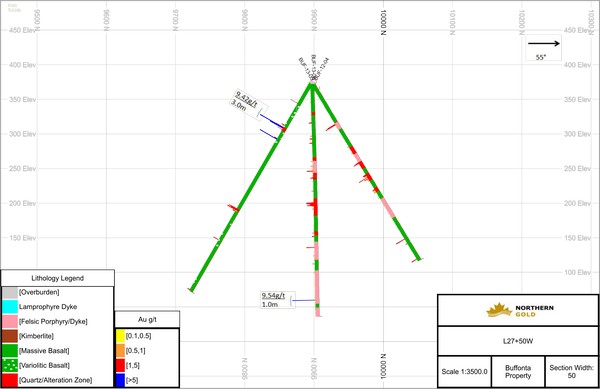
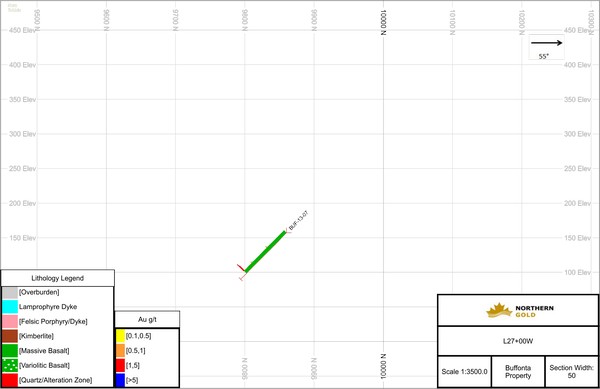
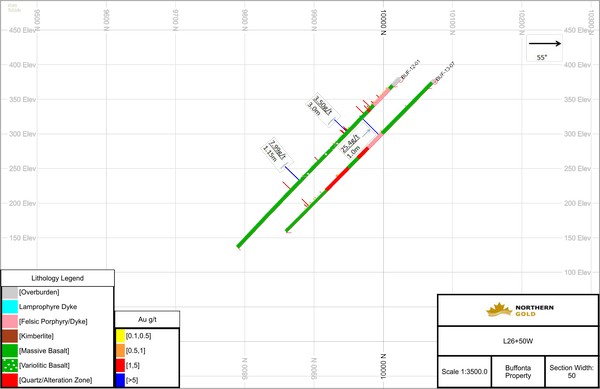
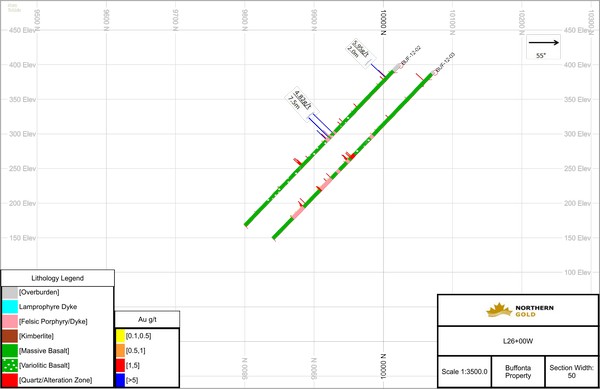
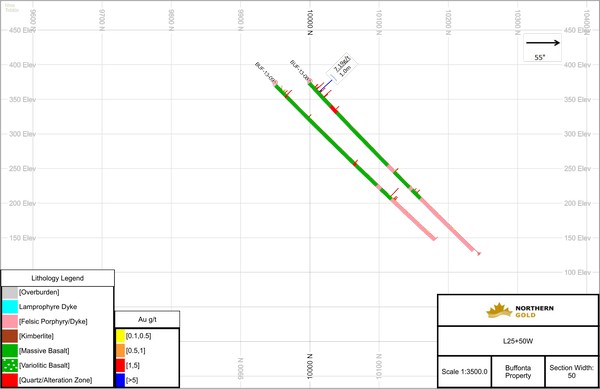
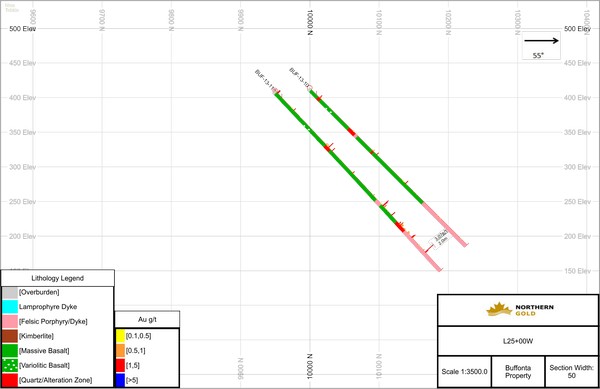
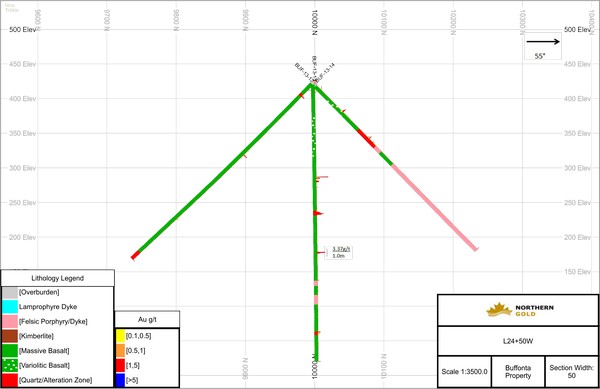
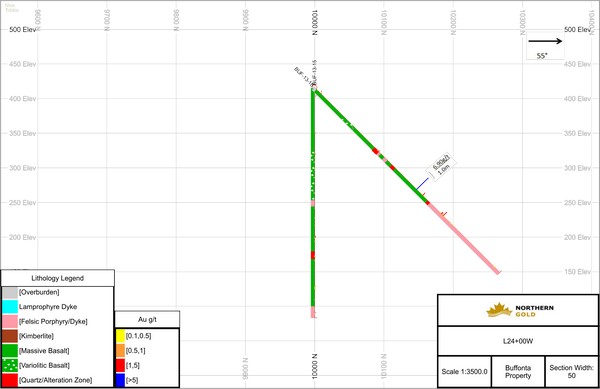
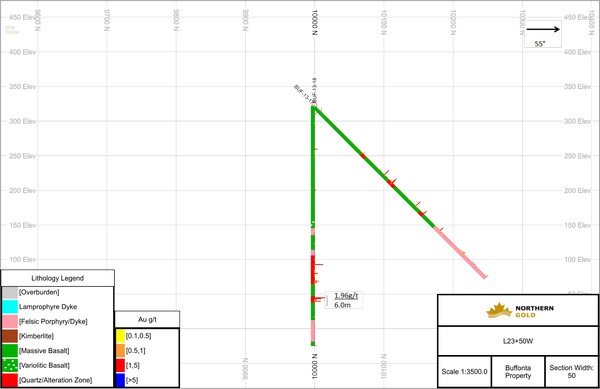
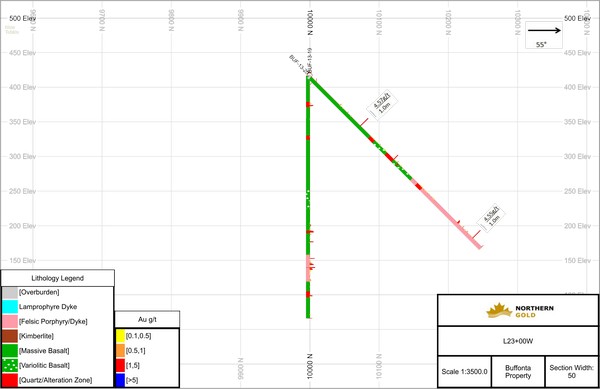
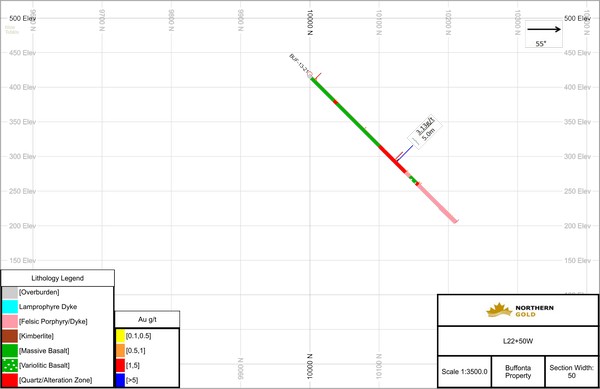
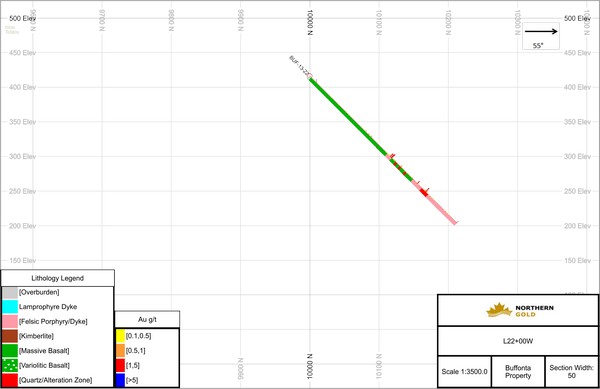
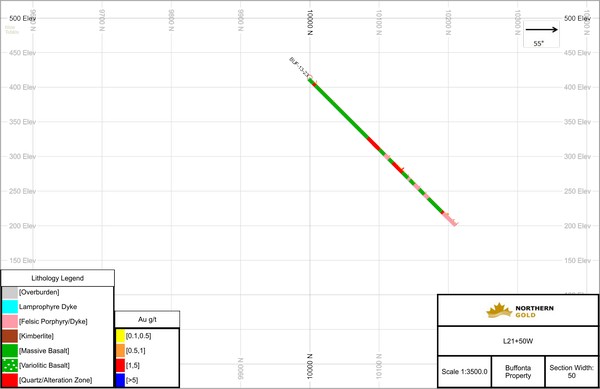
General Geology
The Archean supracrustal rocks underlying most of the claim group are approximately 3.3 Km south of the east striking structurally complex Destor-Porcupine Fault Zone. The Destor-Porcupine Fault Zone is spatially associated with many of the major gold deposits in the Abitibi Greenstone belt. The southern portion of the claim group is intersected by the Ghostmount Fault, host to the Holt-McDermott mine located approximately 12 Km to the northeast.
The bedrock underlying the Buffonta mine group is comprised of weakly metamorphosed subaqueously deposited tholeiitic basalt and volumetrically minor intercalated interflow sediment of the Lower Blake River Group. Intrusive rocks include what is locally termed as the Garrison Stock, a 20 Km2 monzonitic body located about 1 Km northeast of the Kerr pit. Felsic dykes intrude the supracrustal rocks in the Kerr pit area and in the footwall of the number 5 and number 6 zones. Some of these dykes are believed to represent apophyses of the Garrison Stock. Mafic dykes reported to be of lamprophyric and kimberlitic composition are also present. Local to the Garrison stock higher grade metamorphism occurs as a metamorphic aureole around the Garrison stock with localized amphibolite grade facies.
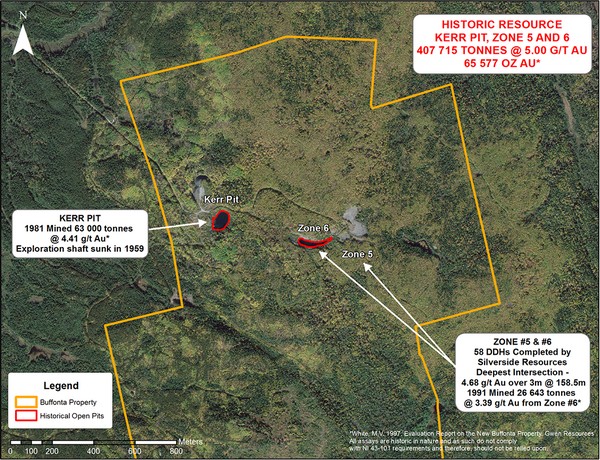
Mineralization
Gold tenors on the Buffonta mine group are known to occur in at least three distinct areas, termed as the Open Pit Zone, Number 5 Zone and Number 6 Zone. All three zones occur marginal to the Garrison Stock along locally northwest striking, south dipping Lower Blake River group meta-volcanic rocks subparallel to the inferred orientation of the Garrison Stock margin.
Mineralization at the Kerr Pit Zone occurs in amphibolite grade meta-volcanic rocks which form part of the contact metamorphic aureole around the Garrison Stock. Gold occurs in quartz veins and vein breccias around which are prominent grey to brown colored pyritic alteration halos. The auriferous quartz veins are reported to fill planar fractures opportunistically and to range from 1-25 mm in width. Cryptic alteration halos surrounding the veins are millimetre to metre scale and carry pyrite constituting 10-20% of the visible alteration halo.
Visible native gold is known to occur within quartz breccia veins and within carbonate veins while microscopic native gold occurs associated with pyrite within and marginal to the quartz veins.
Metallurgy
The metallurgy of the deposit has yet to be discerned and previous mining campaigns have shown good recovery through gravity separation and cyanidation. Reports from the Kerr-Addison mill indicate that recoveries exceeded 90%.
Buffonta Mine History1
The core claim group was first staked in 1936 and incorporated as Amca Mines Ltd who submitted a 790 pound bulk sample to the Canada Department of Mines and Resources which graded 0.417oz/ton (14.3g/t) gold and 0.278oz/ton (9.2g/t) silver.
In 1937 under an option agreement with Hollinger Consolidated Gold Mines Ltd. an open pit measuring 24x18x9m deep was developed. A 75 ton per day mill was installed and mill feed from the open pit yielded 37 ounces of gold and 4 ounces of silver as indicated from previous reports.
The property was subject to several campaigns of diamond drilling from 1938 to 1959 which delineated the Number 5 and Number 6 gold Zones. During 1959, the newly incorporated Thorncliffe Mines explored the Buffonta mine group and sank a 3 compartment - 33m shaft with one level at a depth of 30 meters. In 1961, Thorncliffe installed a 150 ton per day mill and produced over 200 ounces of gold from approximately 2000 tons (1814 tonnes) of material from the open pit zone.
Kerr-Addison mines acquired the property in 1980 and from 1981 to1982 produced 9,000 ounces of gold from approximately 70,000 tons (63,500 tonnes). The ore was being shipped 145 Km to the Kerr-Addison mill in Virginiatown, Ontario.
In 1986 Silverside Resources optioned the property from Kerr-Addison mines and completed diamond drilling which extended the strike and depth of the Number 5 and Number 6 Zones.
In 1987, the remaining interest of the property was optioned from Kerr-Addison by Proteus Resources and Lac Minerals who completed additional diamond drilling and geophysics. In 1989 the companies reported to have drill Indicated resources in the three zones which totalled 600,000 tons at a grade of 0.175oz/ton (6.0g/t)2
In 1990-1991 Gwen Resources mined 26,643 tonnes from the Number 6 Zone which yielded 2,902 ounces gold. The ore was shipped to the Kerr-Addison mill in Virginiatown, Ontario.
Kerr Pit
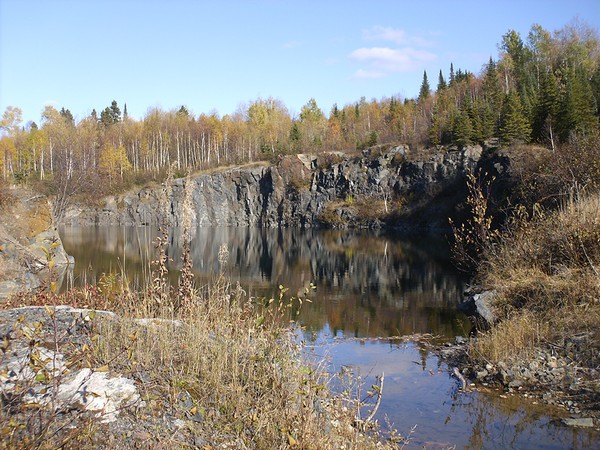

Historical Resource Calculation*
A resource calculation completed by M.V.W. White & Associates Ltd in 1997 for Gwen Resources totalled the resources on the Buffonta Property as such:
| Zone | Grade | Tonnes | Ounces (Au) |
|---|---|---|---|
| 6 Zone | 5.77g/t | 73,207 tonnes | 13,583 ounces |
| 5 Zone | 4.82g/t | 140,988 tonnes | 21,860 ounces |
| Kerr Pit | 4.84g/t | 193,520 tonnes | 30,134 ounces |
| TOTAL | 5.00g/t | 407,715 tonnes | 65,577 ounces |
Recent Acquisition
On September 6, 2012 Northern Gold entered into an agreement with Tiger Gold Exploration Corporation to acquire a 100% interest in the Buffonta Property;
References and Disclaimers
*All assays are historic in nature and as such do not comply with NI 43-101 requirements and therefore, should not be relied upon. All results are reported from 3rd party reports referenced above. No QP has verified the numbers and therefore they should not be relied upon.
1White, M.V. 1997. Evaluation Report on the New Buffonta Property. Gwen Resources.
2Barron, K.M. 1992. Geological Investigation of the New Buffonta Kimberlite. Gwen Resources.
Source: http://www.northerngold.ca/golden-bear-project/buffonta-property

|
 Northern Gold enters into Agreement to Acquire Buffonta Property
Northern Gold enters into Agreement to Acquire Buffonta Property